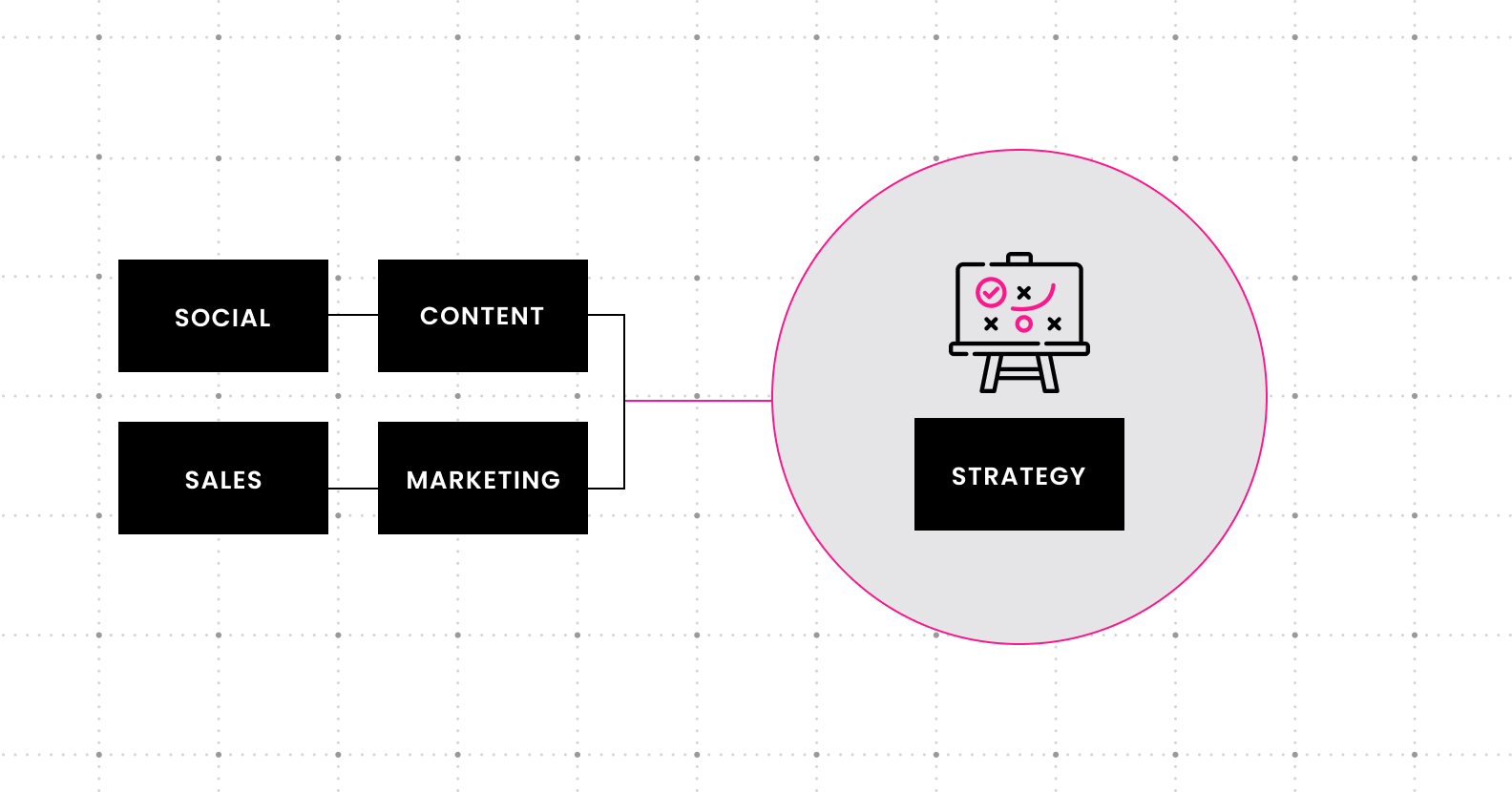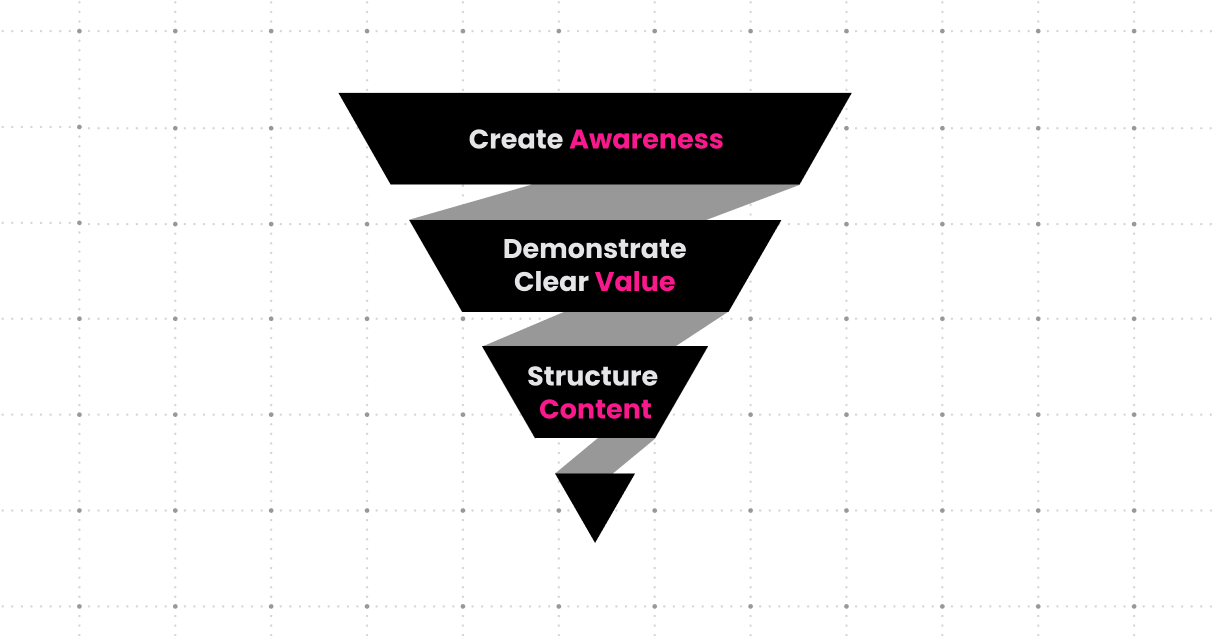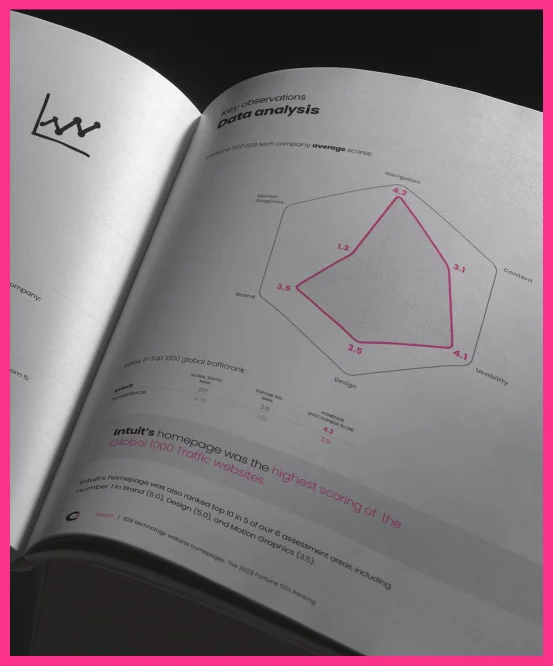You have a better chance of ranking higher in search results, increasing your potential traffic—and therefore your potential ROI.
Breaking through the noise in today’s competitive B2B landscape is a constant challenge. Expectations are higher than ever. The market is increasingly crowded. And competition for customer attention is fierce.
Digital content marketing is a relatively low-cost way to increase brand awareness, engagement, and sales. But if the content you’re creating doesn’t resonate with your target audience, it won’t drive them to take meaningful action. Churning out high volumes of low-quality content will burn through your resources, without producing any significant return.
The secret to not only attracting the right prospects but engaging them in a way that nurtures them through the sales funnel is to create high-quality, strategic content that really strikes a chord. Let’s look at some of the ways you can align your B2B content strategy to your business objectives in 2024, maximizing ROI for your digital marketing efforts, differentiating your brand from the competition, and helping you achieve sustainable growth.
Start with a strong content strategy
As with any business initiative, planning is the first step to achieving the results you want. In the case of content, that means creating a clear strategy that’s tightly aligned to your broader business goals—for example, generating leads or boosting conversions. Rather than developing content in isolation, bring your sales, marketing, and social media teams together to create a focused, versatile, and thoughtfully structured plan.
Consider every point of application for each piece of content—which medium or channel you’ll publish on, who your audience is, what they need, and what you want them to do. Getting clear about your goals and making sure everyone’s on the same page will help you craft more compelling content, and get better results.

Consistency and connection
When it comes to creating content, consistency is key. Aim to promote new content at a regular cadence, then create a schedule and stick to it. In addition to content that’s on trend, you also need content that will remain relevant and valuable over the long-term. Evergreen content helps to establish brand authority and demonstrate thought leadership, attracting consistent traffic.
Whatever type of asset you’re creating, from web copy, blog posts, and white papers to infographics and short-form videos, high-quality content is concise, compelling, and memorable. Even in the world of B2B, it’s all about strong storytelling and making human connections. Content that makes an emotional connection will drive deeper engagement.
Get to know your target audience
To resonate with your target audience, you have to know who you’re talking to. What are the challenges and pain-points they’re dealing with day-to-day that you can solve for? And what’s the emotion at the core of those issues? The more specifically you can address their needs and interests, the more you’ll engage them. The goal should be to offer solutions and information that’s genuinely helpful or answers key questions.

Most B2B brands have to target multiple audiences with different needs. Developing buyer personas and customer segments can deepen your understanding of your audience. Start by defining key traits such as job title, age range, location, interests, and values. Then look at pain-points or use cases and tailor content by segment. Look at how users are engaging with your existing online content to see which topics or asset types are generating the most interest vs. what’s falling flat. Use that data as a jumping off point for planning new content.
Understand the buyer’s journey
In the B2B world, where products cater to a very niche market, buyers tend to follow a longer path to purchase compared with B2C. Your content strategy should be built around this path, with assets tailored to each stage of the funnel. Depending on where buyers are in the journey, they’ll have different questions, and your job is to answer them clearly and concisely. Don’t forget about your existing customers—you also need to promote content that keeps them engaged and provides ongoing value, because retention is critical to the bottom line.

Top of funnel
The goal at this stage should be to create awareness about and build interest in your brand, your product, or your service. Let potential users know that you can solve a specific pain point they’re dealing with. Content should be brief and to the point, with high-level messaging—for example, “what is X” type blog posts or short-form video content, preferably under a minute.
Middle of funnel
Next, you need to drive customer consideration by showing them exactly how your product can help. Mention your product specifically, demonstrating clear value through features, benefits, and outcomes. Customer case studies are a good way to show how you can help them overcome a common challenge, while webinars or tutorials demonstrate specific capabilities.
Bottom of funnel
At this stage, you need to convince buyers to purchase your product or solution rather than any other vendors they may be considering. To drive conversion, it’s time to go even deeper with things like data sheets, product demos, and competitor comparisons. Anything that lets you dive into detail about why your product is the best option available.
Focus on high-value content topics
Structuring your content around the top keywords for each stage of the customer journey can help you connect with high-propensity buyers. Google’s auto-suggest feature can help you see how people are framing their searches around key topics related to your industry or product. For example, if you’re looking for top of funnel keywords, type in “what is [product/service category]” and see what else Google suggests.
If you’re in a crowded market, however, it can be difficult to rank high for keywords with the biggest search volumes. A more strategic tactic is to focus on topics with a lower search volume, which likely have lower difficulty ranking. When you craft content around these keywords or topics, you have a better chance of ranking higher in search results, increasing your potential traffic—and therefore your potential ROI.
You can also use online communities, including Facebook and LinkedIn groups or other industry forums, to mine relevant topics and keep your finger on the pulse of emerging trends. This is a smart way to guarantee an audience—work backwards from what your end users are talking about and create high-quality content to bring them into the fold.
Measure and optimize to drive ongoing improvement
Demonstrating how your content impacts your business outcomes is crucial to securing your budget and to guide your ongoing digital marketing efforts. This requires the ability to continually track and analyze KPIs so you can understand what’s working and what isn’t. Planning your content strategy around key objectives makes it easier to know which metrics to track to assess effectiveness.
Continually analyzing content performance enables you to keep your strategy dynamic and respond to market changes and audience preferences—which is essential in today’s fast-paced world. Adopt an iterative process, testing the effectiveness of various pieces of content and adapting to drive deeper engagement. A data-driven approach will allow you to continually learn, refine, and improve what you’re putting out into the world, and connect your content marketing efforts directly to your desired business outcomes.

If your B2B digital content marketing strategy isn’t driving measurable business outcomes, our team can help. We have 20+ years of experience helping leading B2B brands move the dial on digital marketing performance—and delivering real-world impact. Let’s talk.






